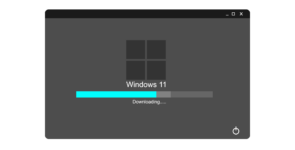In terms of demand, it amazes me that Microsoft had the most successful launch of an operating system in history with Windows 95 and nearly the worst product roll-out of that same product, yet internal politics resulted in Microsoft believing the successful part of the launch was the problem to be fixed. It would be like watching a football team where the quarterback threw perfect passes that the receivers couldn’t catch, and then seeing the coach pull the quarterback because he was making the receivers look bad.
This goes to the heart of the problem with Windows 11: there is virtually no demand generation going on for it, so it’s more surprising that Windows 11 has done so well than that it has done so poorly.
Let’s explore why Windows 11 is lagging in adoption and the kind of problem that it will create in 2025 if Microsoft executes to plan and pulls support that year.
Why getting the market to move is important
With every generation of Windows, Microsoft has significantly improved the security of the platform. Historically, the older platforms increasingly become viable targets for hackers because the top tier employees who supported the old platform move to working on the new one.
In addition, supporting multiple versions of an OS is a problem for developers who then must support the multiple versions and can’t use new features in the new OS aggressively because they still must support the old OS. Given users typically get a free upgrade to the new OS at or around launch, if your hardware supports it, you’d think adoption rates would be far faster over time. Instead, they seem to be slowing down despite the fact that OS upgrades, compared to what they were back in Windows 95 days, are virtually painless.
From Microsoft’s perspective, a fast upgrade cycle reduces its support costs, reduces its exposure to bad press that results from the old OS being breached, and tends to result in higher customer satisfaction (except when they screw the release up like they did with Vista and Windows 8). Windows 11 is a nice improvement over Windows 10 which was a massive improvement over Windows 8, so why the low adoption rates?
Microsoft’s demand problem
Despite the fact Microsoft has employed some of the best marketing people I’ve ever met (I’m an ex-marketing director myself), it is like too many tech companies and doesn’t institutionally get marketing. Too often, the marketing experts aren’t given adequate resources, aren’t making key marketing decisions, and the company seems to think that successful marketing is a bad thing going back to that Windows 95 experience.
And Windows 95 was an amazing launch. There were lines around the block to buy the OS. The market was so hot, Microsoft had trouble keeping up with demand, but it failed to adequately assure the product’s quality or to properly staff support to handle what became a nightmare support load.
Many of the problems that Windows 95 enjoyed have gone away. For instance, back then drivers were a mess, and Microsoft’s release process allowed for last minute changes after a beta had been approved, both of which resulted in lots of breakage. There was also a lot of older hardware or low volume hardware in the market that wouldn’t run Windows 95 that only got identified when the product was installed. It was a perfect storm of massive demand, poor quality experience and massively underpowered support.
Over the years, Microsoft has largely fixed the driver and hardware diversity problem. Now they force you to make sure the new OS will work on your hardware before you install it, and, with AI, it has the ability to scale support like never before. But because of that early failure, Microsoft still thinks demand is a bad thing and lament the lack of it, while doing little to fix the problem.
Fortunately, Microsoft doesn’t have a competitor problem. Unfortunately, older versions of Windows fill that niche and, unlike competition, aren’t forcing Microsoft to focus on customers but reducing costs which doesn’t bode well for the future of this platform. It’s more likely to result eventually in an emerging competitor, most likely a smartphone variant that eventually displaces PCs and makes both Windows and personal computers obsolete.
Wrapping up
As demand for Windows 11 declines and Microsoft increasingly becomes the Azure company, the ability to support OEMs or even its own PC platform, Surface, declines as well. In Surface’s case, this may be a good thing because, given Microsoft’s licensing model, Surface likely had done more damage to the overall PC market by reducing Microsoft’s support for OEM PCs over time while not fully embracing the Apple model (which included dedicated stores and Genius Bars) that it attempted, but failed, to emulate. You could argue that Surface has been dead for some time, but no one told Microsoft.
Windows 12 is expected next year and, much like it was with Windows 10, jumping a release from Windows 10 to 12 will likely require new hardware or be painful. Microsoft should have begun building interest in Windows 12 by now, but it’s still struggling to build demand for Windows 11.
Microsoft’s best defense against an eventual viable smartphone-based PC alternative is to have everyone on its current platform happy. On the current path, 2025 will likely provide the best opportunity for anyone wanting to displace PCs and Windows as a desktop OS. The current PC sales numbers are ugly, and OEMs are looking for a way out. Unless Microsoft steps up, that way out may be with a different vendor entirely. If the right vendor steps up, they could take out Windows and Azure with one better executed hybrid solution.
This won’t happen overnight, but remember how quickly the iPhone took out even the most powerful vendor prior to that product’s success? Things can happen very quickly in this market, and while Microsoft treats Windows as a legacy product by under-resourcing it, it may soon discover that it is critical to Azure’s success. Losing one will likely do massive damage to the other.
Microsoft needs to fix its demand problem before that problem fixes Microsoft.








